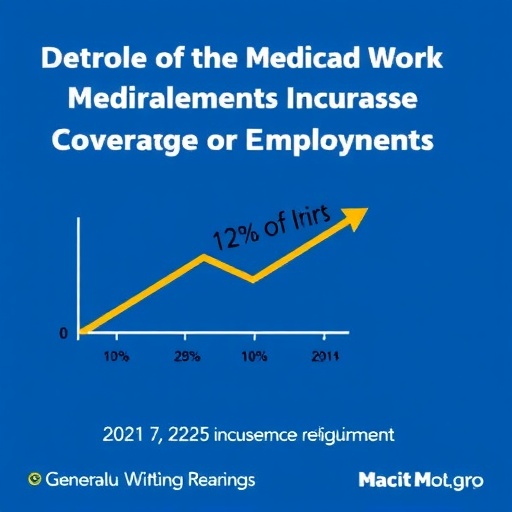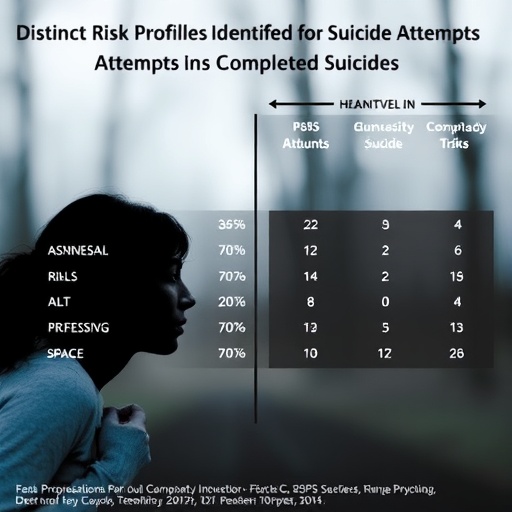In a notable development within the landscape of United States healthcare policy, recent research published in The BMJ has brought into focus the efficacy—or lack thereof—of incorporating work requirements into Medicaid expansion programs. Medicaid, the public health insurance program designed to support low-income adults, has traditionally aimed to provide broad health coverage access without employment stipulations. However, Georgia’s pioneering experiment with Medicaid expansion under the Pathways to Coverage program, initiated in 2023, introduced mandatory work requirements for certain adults. This quasi-experimental study evaluates whether this policy effectively increases insurance coverage or employment rates among low-income populations.
The study utilized a difference-in-differences approach, an observational methodology, drawing on survey data from the U.S. Census Bureau’s Household Pulse Survey spanning 2021 to 2024. In total, responses from 17,451 working-age adults (ages 19 to 64) were analyzed. Among these, 3,303 participants resided in Georgia—the intervention state with Medicaid expansion tied to work requirements—while 14,148 participants were from five neighboring control states (Alabama, Florida, Mississippi, South Carolina, and Tennessee), which had not adopted Medicaid expansion. This rigorous comparative framework allowed researchers to isolate the effects attributable to the Pathways to Coverage policy from broader regional trends.
The findings indicate that, 15 months following the rollout of Georgia’s Medicaid expansion with work requirements, the program failed to drive an increase in Medicaid coverage. Specifically, Medicaid enrollment decreased modestly in Georgia, from 35.5% to 32.4%, while rates in the control states remained stable, moving marginally from 39.6% to 39.3%. Statistically, this translates to no significant differential change in health coverage attributable to the work requirements initiative. Moreover, employment rates among low-income adults in Georgia did not show meaningful improvements compared with those in neighboring states without Medicaid expansion.
An additional, more focused analysis compared Georgia’s outcomes with South Dakota, a state that expanded Medicaid without imposing work requirements. The results suggested that Medicaid coverage in Georgia declined by nearly 12 percentage points relative to South Dakota, emphasizing a potential negative impact of embedding work prerequisites in eligibility criteria. Despite these changes in coverage, employment rates between Georgia and South Dakota remained unchanged, suggesting that the work requirements did not effectively translate to increased labor market participation among the targeted population. This insight challenges the foundational assumption underpinning federal policy proposals such as the “One Big Beautiful Bill Act,” scheduled for nationwide implementation in 2026, which mandates work requirements for Medicaid recipients.
The study authors posit several explanations for these counterintuitive findings. A key consideration is that a large portion of working-age Medicaid beneficiaries are already employed or face substantial barriers to employment due to health, disability, caregiving responsibilities, or lack of opportunities. Thus, linking eligibility to work status may create administrative burdens without materially affecting employment rates. Additionally, complex eligibility verification and re-enrollment procedures inherent in the work requirement framework may inadvertently increase the risk of coverage loss or “churn” among vulnerable populations, undermining the goal of expanded insurance coverage.
From a methodological perspective, the researchers acknowledge certain limitations. The reliance on self-reported survey data introduces potential measurement errors such as recall bias or misreporting. The relatively low response rate of the Household Pulse Survey raises concerns about the representativeness of the sample demography, which could skew findings. The observation window, covering just the initial 15 months post-policy implementation, also restricts insights into long-term outcomes, which may evolve as compliance mechanisms and administrative processes are optimized or altered.
Nevertheless, the study delivers a striking conclusion: policies premised on mandating work participation to expand Medicaid enrollment or boost employment among low-income adults have, at least in the short term, failed to achieve their objectives. The Pathways to Coverage program serves as empirical evidence challenging the effectiveness of such work requirements in increasing insurance coverage or labor force engagement. As policymakers prepare for the nationwide adoption of similar mandates, the study calls for a critical reevaluation of the assumptions driving these reforms and for mounting evidence-based strategies rooted in the lived realities of Medicaid beneficiaries.
This research also underscores the broader complexities at the intersection of health insurance policy and socio-economic participation. It highlights the crucial need for system designs that avoid penalizing beneficiaries for factors beyond their control and that minimize bureaucratic complexities, which can inadvertently disenfranchise rather than empower marginalized groups. Moving forward, the study advocates for enhanced monitoring and sustained investigation into the longitudinal impacts of work requirement policies on both health outcomes and economic stability for vulnerable populations.
In conclusion, the initial evidence from Georgia’s Medicaid expansion with work requirements suggests that imposing employment criteria may not only be ineffective in enhancing coverage rates but could also precipitate unintended negative consequences such as decreased insurance uptake. The policy’s inability to catalyze employment growth further calls into question its broader utility. As the nation approaches a pivotal shift in Medicaid eligibility frameworks, these findings provide an essential, data-driven perspective essential for shaping policies that genuinely promote health equity and economic opportunity.
Subject of Research: People
Article Title: Insurance coverage and employment after Medicaid expansion with work requirements: quasi-experimental difference-in-differences
News Publication Date: 30-Sep-2025
Web References: http://dx.doi.org/10.1136/bmj-2025-086792
Keywords: Health insurance
Tags: difference-in-differences approach in researcheffects of work stipulations on MedicaidGeorgia Pathways to Coverage programhealthcare access for low-income adultsinsurance coverage effects studylow-income healthcare policiesMedicaid expansion and employment ratesMedicaid policy evaluation findingsMedicaid work requirements impactobservational methodology in healthcare researchpublic health insurance and employmentU.S. Census Bureau survey analysis





